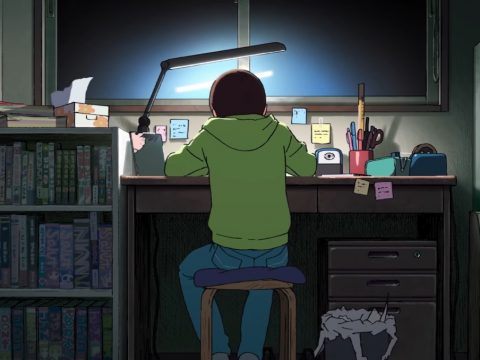
In 2021, Chainsaw Man creator Tatsuki Fujimoto released Look Back. This special one-shot introduces protagonists Fujino and Kyomoto, starting as fourth graders and eventually becoming early smash hit manga artists. But things take a turn when their priorities no longer align. The story addresses the hard work, anxiety, envy, and other emotions—good and bad—that creators pour into their work. It also shines a spotlight on the talent taken away from us too soon.
With the movie now available on Amazon Prime, we’re taking a look at all the things that make Studio DURIAN’s adaptation special. While it differs from the manga in a few ways, those changes only serve to make the message and mood stronger than ever.
The Story

Look Back begins with fourth-grader Fujino, who has grown accustomed to receiving praise for her four-panel manga in the school paper. Then she sees the work of Kyomoto, an exceptional artist who never comes to class, and her envy pushes her to improve even more. Eventually, that envy causes Fujino to give up drawing—until a chance meeting with Kyomoto convinces her to try again.
Joining forces with Fujino on figure drawing and Kyomoto handling backgrounds, the two find early success with several one-shots. But right before their series premiere, Kyomoto decides to bow out of their partnership and attend art school. Fujino’s more selfish side resurfaces as she attempts to bully Kyomoto into staying, but the two part ways. When Fujino’s Chainsaw Man-esque Shark Kick is well underway, she receives shocking news that brings life as she knew it to a standstill.
The Art

Look Back comes from Flip Flappers director Kiyotaka Oshiyama, who also worked on Devil design and sub-character design for Chainsaw Man. Oshiyama’s familiarity with Tatsuki Fujimoto’s work makes him a natural choice to write and direct this adaptation. Moments from the manga are expanded and animated in ways that feel very right and very Fujimoto-esque. A highlight is the scene of Fujino skipping home in the rain after meeting Kyomoto. The almost aggressive happiness leapt off the page in the original manga, and it’s captured perfectly here.
Fujimoto’s art style also lends itself to “uglier” emotions—not in terms of validity, but just the fact that we as humans aren’t exactly glamorous when we cry or get angry. All the characters in this film are massively expressive, from their faces to their stances. Much of this film goes by quietly and slowly, carried by the “acting” of these characters in their private moments.
The Message

Oshiyama said in an interview with Anime News Network that he wasn’t looking to convey an explicit message with Look Back. But there are messages that come through, explicit or not, and so much of that is down to the art and story coming together to create believable, difficult characters. Fujino is, for example, not the best person. She’s not horrible or irredeemable, as we see in the third act of the story and in shining little moments throughout. But she is prone to taking out her anxiety and feelings of inadequacy on others. She’s the polar opposite of Kyomoto, who literally hides from others. But both desperately want to be seen for their art, despite putting up shields of their own making. Deep down, they care about each other, and the other’s presence is what makes art worthwhile.
Viewers will also notice a marked reference to the tragic Kyoto Animation arson incident of 2019. While this film is a reminder to remember why we do what we do as creators, it’s also a memorial to those we’ve lost. The final act of Look Back presents the sort of “what if” that so many of us pursue in our grief—the thought of how things could have been different if this had happened or that hadn’t happened. But it’s also a reminder that we must carry on, whatever version of reality we find ourselves in, and put our voices out into the world. It’s a beautiful and contemplative film, and one that will sit in your heart long after you’ve watched it.





